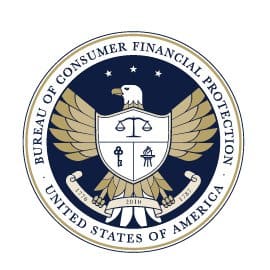How to Rewrite the Payday Loan Rule

 Last Friday, the Bureau of Consumer Financial Protection announced that it will be reconsidering its’ controversial Payday, Vehicle Title, and High-Cost Installment Loan rule. For a recap of what the rule involves, you can see my paper here. Despite what some predicted, the Bureau is considering rewriting only certain provisions of the rule, such as the ability-to-repay requirement, rather than rescinding or rewriting the rule in its entirety.
Last Friday, the Bureau of Consumer Financial Protection announced that it will be reconsidering its’ controversial Payday, Vehicle Title, and High-Cost Installment Loan rule. For a recap of what the rule involves, you can see my paper here. Despite what some predicted, the Bureau is considering rewriting only certain provisions of the rule, such as the ability-to-repay requirement, rather than rescinding or rewriting the rule in its entirety.
Undoubtedly, the Bureau’s hesitance to rescind the entire rule is due to the problem of overcoming “arbitrary and capricious” review by the courts. Arbitrary and capricious review is a process by which a court reviews an agency’s policymaking process to ensure that it does not exceed the proper bounds of administrative discretion. In other words, the agency must provide adequate justification for rewriting the rule.
Rescinding the rule would be a challenging process, but by no means insurmountable. As I have outlined in my paper, as well as in regulatory comments, the research underlying the payday rule is deeply flawed. The two studies undertaken by the Bureau to justify the regulation have major shortcomings, such as their dubious behavioral economics claims, to the extent that the validity of the entire rule is in question. For example, as University of Chicago economics professor Marianne Bertrand and University of California, Berkeley law professor Adair Morse have written in their study of the industry:
…the simple fact that individuals take out payday loans, even for relatively extended periods of time, certainly does not prove that these individuals are being fooled or preyed upon by payday lenders. Individuals might be fully informed about the fees associated with payday loans, might not have self-control problems, might not suffer from overly optimistic expectations about their ability to repay these loans, and instead might decide to borrow from payday lenders at high interest rates.
If the Bureau were to revisit or challenge the research underlying the rule, it would likely be able to rescind the rule in its entirety. The problem, however, is that the industries impacted by the rule have only until August 2019 to comply, making time of the essence. Having to completely revisit the 1,600-page rule, which included five years of research and development, is likely to take too long. By then, the vast majority of the industry could be made unprofitable by the onerous regulation.
Nevertheless, even taking for granted the Bureau’s underlying research and factual premises, the rule can be significantly revised. Perhaps one of the most effective ways would be to replace the ability-to-repay requirement with an enhanced disclosure regime.
The ability-to-repay provisions are the Bureau’s solution to the supposed problem that consumers underestimate their ability to repay a loan and therefore resort to repeat borrowing. The Bureau claims that consumers lack the cognitive ability to adequately understand the risks of payday loans, which leads them to act against their self interest and repeatedly rollover their loans more than they intended to do so. But an ability-to-repay requirement is not the only—or even the best—answer to this problem. Indeed, a heightened disclosure regime, which has historically been the answer to these types of issues, could be much more appropriate. The concept is a staple in consumer credit regulation: firms should clearly and accurately disclosure the terms and risks of a product, and leave an informed consumer—not a Washington bureaucrat—to make the choice about what is best for them.
The Bureau never bothered to test whether the ability-to-repay requirement would actually be effective at reducing consumer irrationality. But academics have tested whether heightened disclosure regimes can help solve the kind of cognitive problems identified in the rule. In the study referenced above by professors Morse and Bertrand, titled “Information Disclosure, Cognitive Biases and Payday Borrowing,” the authors set out to explore the possible policy prescriptions for cognitive limitations in payday loan borrowing:
If people face cognitive limitations or biases that lead to financial mistakes, what are possible ways lawmakers can help? One approach is to remove the option of the bad decision; another approach is to increase financial education such that individuals can reason through choices when they arise. A third, less discussed, approach is to mandate disclosure of information in a form that enables people to overcome limitations or biases at the point of the decision. (Emphasis added.)
The authors looked at varying payday loan disclosure regimes to find what information helps people “think less narrowly about the cost of payday borrowing”—almost the exact same problem identified by the Bureau. They find that an enhanced disclosure regime tailored towards identifying the problems with rollovers “reduces the take-up of payday loans by about 10 percent in a 4 month-window following exposure to the new information.” In other words, the results suggest that an enhanced disclosure regime that clearly and accurately describes the risks of excessive payday loan borrowing can help solve specific cognitive biases and limitations of consumers.
Another justification for revisiting the payday loan rule is that the ability-to-repay provision proposed by the Bureau is unnecessarily burdensome, going beyond what is required to solve the supposed problem. For example, the Bureau admits that short-term borrowing can be useful and not harmful. Instead, it is long-term usage that is harmful. But as the Bureau found, the majority of all loans, 64 percent, are short-term, while only about one-quarter of all rollovers are longer-term, involving more than five loans, and less than one-fifth involve eight loans or more. The Bureau’s concern that borrowers are regularly rolling over their loans are therefore limited to a small group of consumers. Yet the effect of the rule, thanks predominately to the ability-to-repay requirement would be to eliminate between 75 to 91 percent of all present payday borrowing. The Bureau’s final rule will therefore restrict consumers’ access to credit even if those consumers do not rollover their loans.
A lighter regulatory intervention, such as an enhanced disclosure regime, is a solution better tailored to the problem identified. This is not trivial. The Regulatory Flexibility Act (RFA) requires federal agencies to assess the impact of their proposed regulations on small businesses and to consider less burdensome alternatives. But from just about all accounts of those small businesses involved in the process, the Bureau entirely ignored these less-burdensome alternatives. The Small Business Administration’s Office of Advocacy even found that “[the] Bureau of Consumer Financial Protection grossly violated the [RFA requirements] in promulgating the Payday Lender Rule.” Recalibrating the rule to better comply with these requirements is a legitimate exercise of the Bureau’s authority.
In sum, even when accepting the Bureau’s flawed research as given, the ability to repay requirement does not appropriately fit the factual underpinnings presented. A heightened disclosure regime does. It is a solution that has been tested and shown to help solve the supposed problem. It is also much less intrusive and disruptive to the industry, preserving consumer’s access to credit, especially to those whom the Bureau deems to be benefitting from payday loans. Replacing the burdensome ability-to-repay requirement with a simple enhanced disclosure regime would allow the Bureau to rewrite the final rule without running afoul of the arbitrary and capricious hurdle.